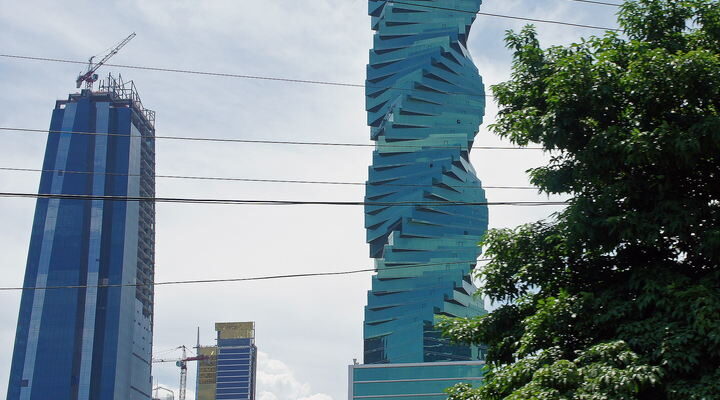When gazing up at the skyline of major cities worldwide, one can’t help but notice the influx of twisted buildings and twisting skyscrapers standing tall amongst their rectangular counterparts. But what exactly is this “twisting structure architecture”? In essence, it’s an architectural design where a building appears to spiral or rotate around its central axis, creating a visual illusion of movement and dynamism.
Yet, these whimsical designs aren’t just for show. Twisted structures provide certain advantages, especially in regions prone to earthquakes. Twisted building structures are famous with flexibility at their core, enabling them to withstand seismic forces. When earthquakes strike, these buildings sway, absorbing and dispersing energy more efficiently, reducing the potential for catastrophic damage. Are twisted skyscrapers safe during earthquakes? Absolutely! Their helical design combined with the latest in engineering marvels ensures they remain standing tall, even when the earth shakes beneath them.
So, as we venture into the world of architecture’s marvels, get ready to be introduced to 10 Most Innovative Twisted Buildings Pushing Architectural Boundaries that have revolutionized urban landscapes.
10 – Turning Torso: Sweden’s Spiraled Wonder
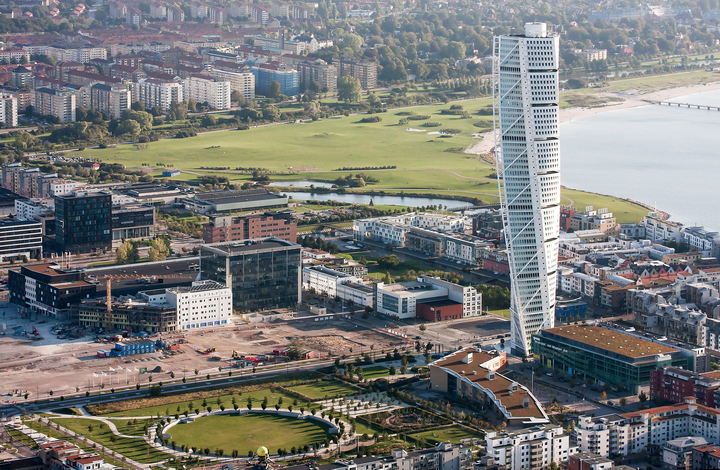
Nestled in the heart of Malmö, Sweden, the Turning Torso stands as a testament to avant-garde architecture. Designed by the renowned Spanish architect Santiago Calatrava, this iconic structure has become a defining silhouette of the city’s skyline since its completion in 2005.
With a staggering height of 190 meters and encompassing 54 stories, the Turning Torso draws its inspiration from a sculpture – a human figure in motion. Its segmented design, resembling vertebrae, twists a full 90 degrees from base to top. Not just an architectural marvel, the building serves a dual purpose: it houses both offices and residential spaces. As the tallest building in Scandinavia, it has, over the years, become an attraction for tourists and architecture enthusiasts alike.
Visiting the Turning Torso offers a panoramic view of the Öresund Bridge, connecting Sweden to Denmark, making it not just an architectural spectacle but a vantage point for some of the best views in the city.
09 – Cayan Tower: Dubai’s Twisting Triumph
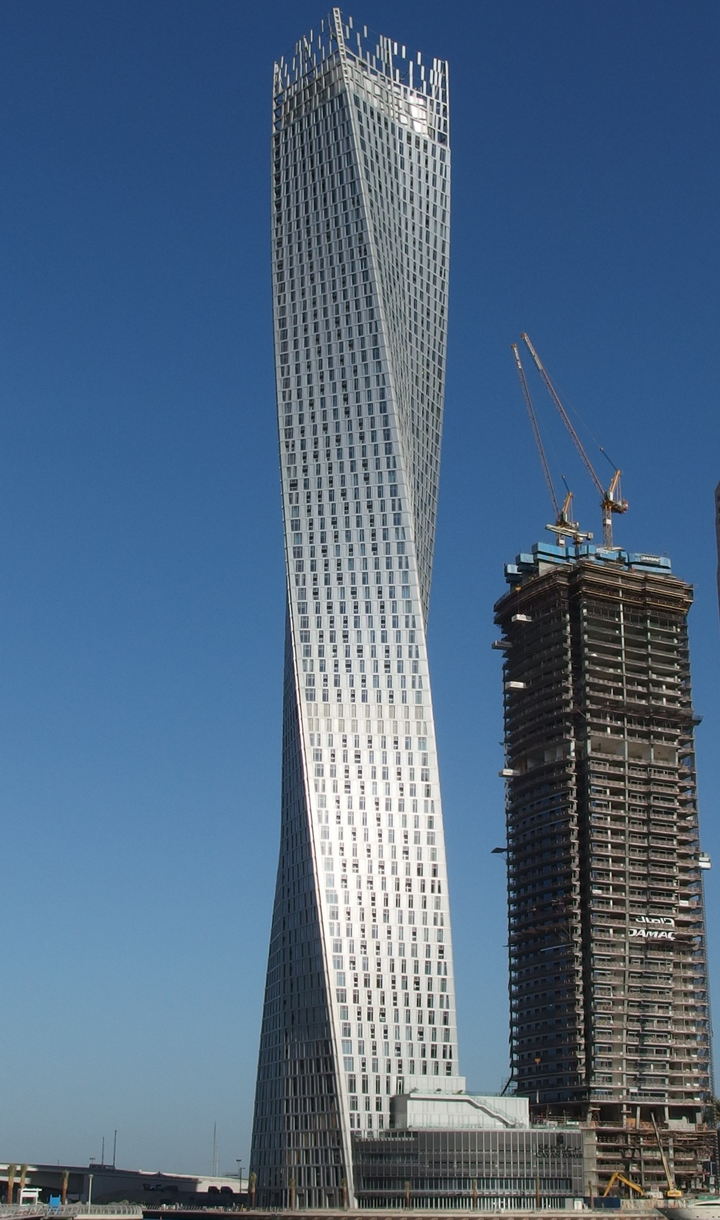
Dubai, known for its love affair with skyscrapers, is home to the Cayan Tower. Another marvel in the realm of twisted architectural designs. Located in the luxurious Dubai Marina, this spiraled giant was the brainchild of the acclaimed firm Skidmore, Owings & Merrill.
Completed in 2013, the Cayan Tower stands tall at 306 meters, boasting 73 stories without a single structural column within its interiors. What sets it apart is its unique 90-degree twist, ensuring that no two floors are the same. This innovative design not only provides a distinctive aesthetic appeal but also offers residents shade from the relentless sun, a feature especially beneficial in the Middle East.
Consequently, Cayan Tower has become synonymous with luxury, offering high-end residences with a view of the azure waters of the Arabian Gulf. It’s more than a building; it’s an experience, capturing the essence of modern-day Dubai – a blend of luxury, innovation, and architectural prowess.
08 – Lakhta Centre: Russia’s Sky-Piercing Marvel
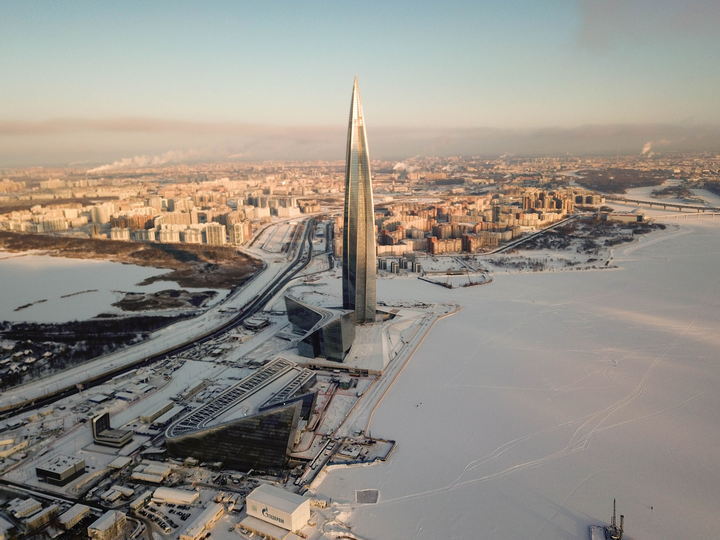
Standing tall against the backdrop of St. Petersburg’s historical skyline is the Lakhta Centre, an epitome of contemporary architectural brilliance. Spearheaded by architect Tony Kettle, this colossal structure has redefined Russia’s architectural landscape.
Towering at an impressive 462 meters, the Lakhta Centre claims the title of the tallest building in Europe. Completed in 2019, its design encapsulates a flame’s movement, twisting and reaching upwards. Beyond its aesthetic appeal, the building is a hub for business, boasting state-of-the-art offices, a scientific and educational center, and an observation deck that offers a bird’s-eye view of the sprawling city below.
Consequently, one of the hallmarks of the Lakhta Centre is its commitment to sustainability. It holds the accolade of being the largest building in the world to receive the Platinum LEED certificate, emphasizing energy efficiency and environmental design.
Additionally, its juxtaposition against St. Petersburg’s historic buildings offers a harmonious blend of the old and new, showcasing Russia’s leap into the 21st-century architectural realm.
07 – Evolution Tower: Moscow’s DNA-Inspired Masterpiece
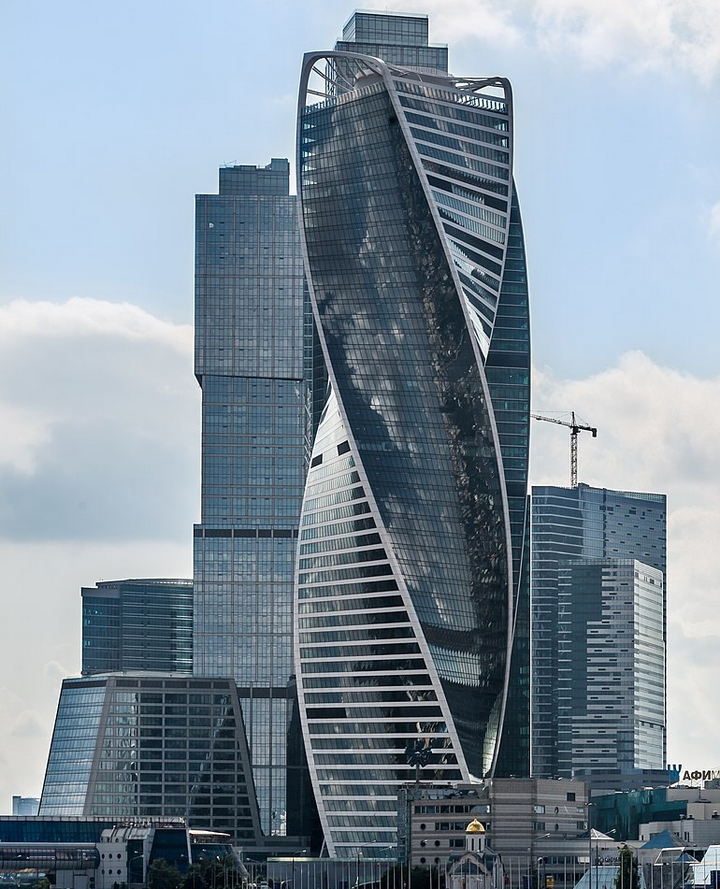
The heart of Moscow City’s business district beats to the rhythm of the Evolution Tower, a structure whose design seems to capture the very essence of dynamic change. Pioneered by the visionary duo Philip Nikandrov, River Kondi, and Gorproject, this architectural prodigy was unveiled to the world in 2014.
At a sweeping height of 246 meters and with 55 floors to its name, the Evolution Tower gracefully coils into the sky, reminiscent of the spirals of a DNA strand. This dual helix rotation, roughly 3 degrees per floor, culminates in a remarkable 135-degree twist from the base to the top. Its unique form is not just symbolic of life’s constant evolution but also offers residents varying perspectives of Moscow’s sprawling urban tapestry.
Hosting a blend of commercial offices and retail spaces, the Evolution Tower has metamorphosed into a significant landmark in Moscow’s modern skyline, drawing the eyes and hearts of many who pass by.
06 – Azrieli Sarona Tower: Tel Aviv’s Glimpse into the Future
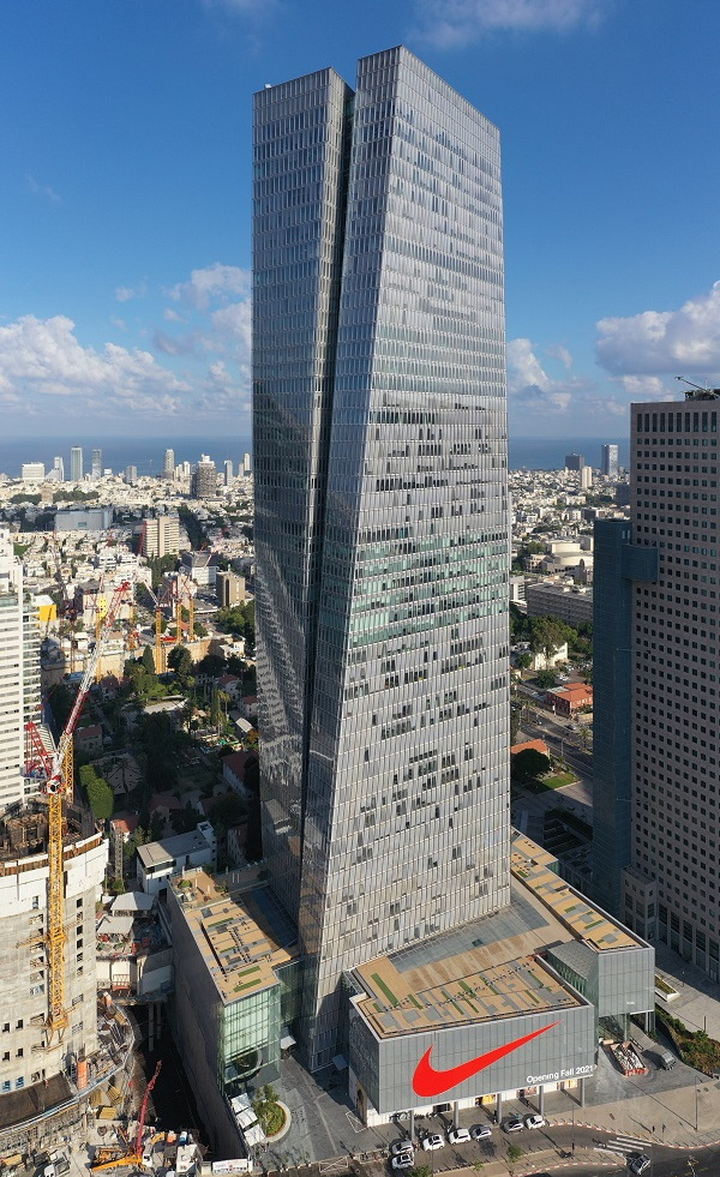
In the bustling urban sprawl of Tel Aviv stands the Azrieli Sarona Tower – a beacon of modern architectural prowess amidst a city steeped in history. Conceived by the renowned architect Moshe Zur, this tower adds a futuristic flair to Tel Aviv’s cityscape.
Stretching to the sky at 238.5 meters and encompassing 61 floors, the Azrieli Sarona Tower was completed in 2017. Its slender and elongated form exhibits a slight twist, adding a touch of elegance and dynamism to its structure. The tower’s façade, adorned with shimmering glass panels, reflects the city’s vibrant life, making it a living piece of art.
Predominantly serving as an office space, the tower also boasts an upscale commercial area at its base. For those yearning for a panoramic view, the observation deck at its summit offers a breathtaking vista of Tel Aviv and the Mediterranean coastline.
05 – Shanghai Tower: China’s Vertiginous Marvel
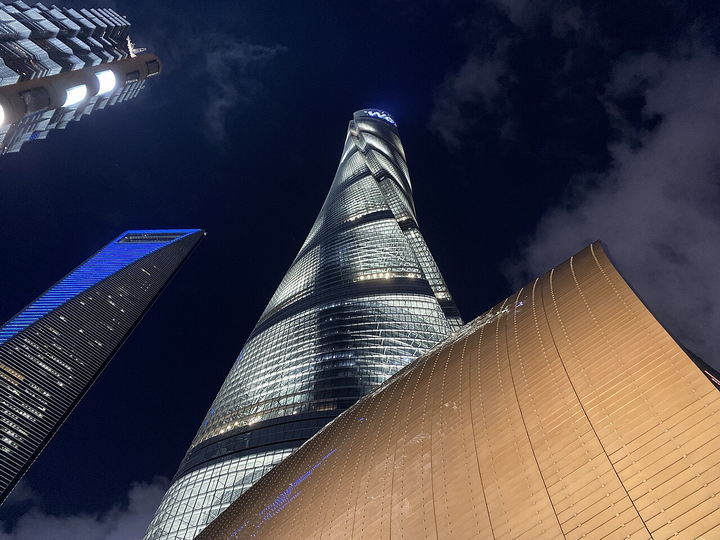
Commanding the skyline of one of the world’s most bustling metropolises is the Shanghai Tower. Nestled in the heart of Shanghai’s Lujiazui financial district, this skyscraper stands as a testament to China’s meteoric rise in the world of innovative architecture. The genius behind this iconic structure is the acclaimed architectural firm Gensler.
Scaling a dizzying height of 632 meters and comprising 128 floors, the Shanghai Tower, upon its completion in 2015, became the second tallest building in the world. Its distinctive spiraled form, which twists about one degree per floor, allows it to withstand the city’s typhoon-force winds, a triumph in engineering innovation.
But there’s more to the Shanghai Tower than just height and form. It encapsulates a city within a city, housing everything from offices, retail spaces, a boutique hotel, and cultural venues. The tower also champions sustainable architecture, with features like wind turbines, rainwater recycling, and double-skinned insulation.
Visitors flocking to its observation deck are greeted with a sweeping panorama of the city’s vibrant pulse, making the Shanghai Tower not just an architectural masterpiece but also a window into Shanghai’s soul.
04 – Crown Sydney: Australia’s Harborfront Jewel
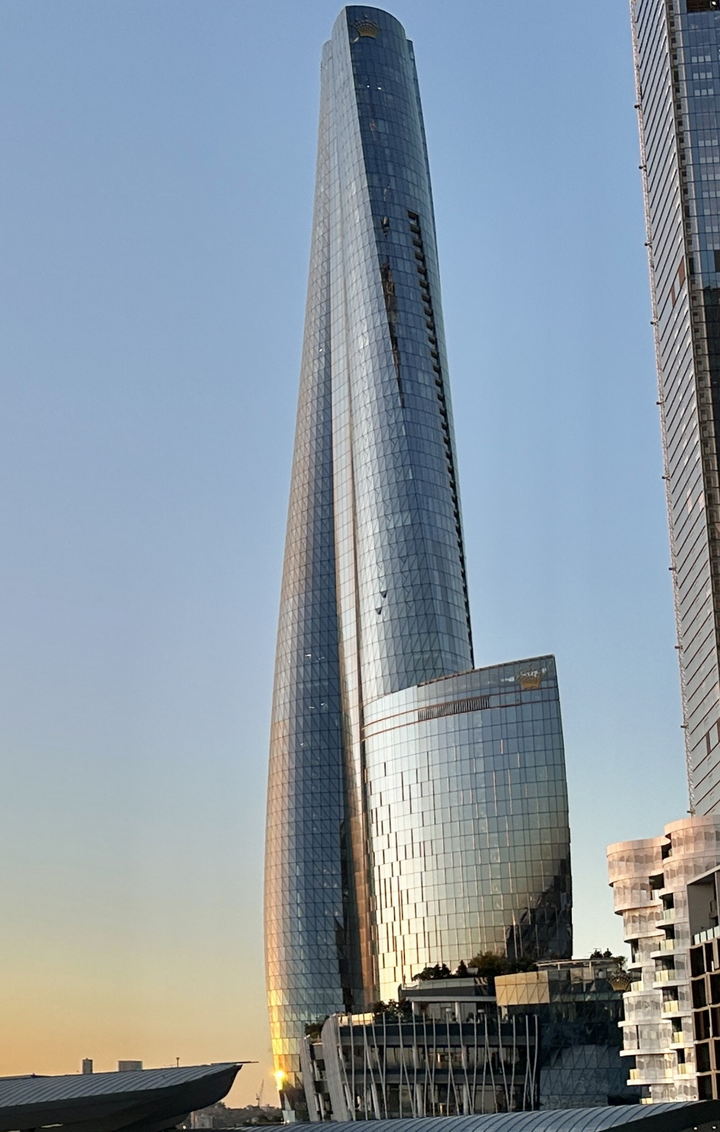
Perched elegantly on the shores of the iconic Sydney Harbor is the majestic Crown Sydney. Designed by the esteemed British architect Chris Wilkinson of WilkinsonEyre, this skyscraper adds a contemporary silhouette to the city’s globally recognized skyline.
Stretching skyward to a height of 271 meters over 75 floors, Crown Sydney was unveiled in 2020, becoming the city’s tallest habitable building. Its unmistakable petal-like forms subtly twist as they ascend, capturing the elegance of nature’s organic shapes. The faceted glass exterior magnifies the beauty of the waterfront, making it a dynamic canvas that reflects the changing colors of the sea and sky.
While primarily known as a luxury hotel and resort, Crown Sydney also boasts a range of premium restaurants, bars, and an exclusive casino. For guests and visitors, the experience is enriched by the tower’s panoramic views of the Sydney Opera House and Harbor Bridge, two of the most iconic landmarks in the Southern Hemisphere.
03 – F&F Tower: Panama’s Spiraled Icon
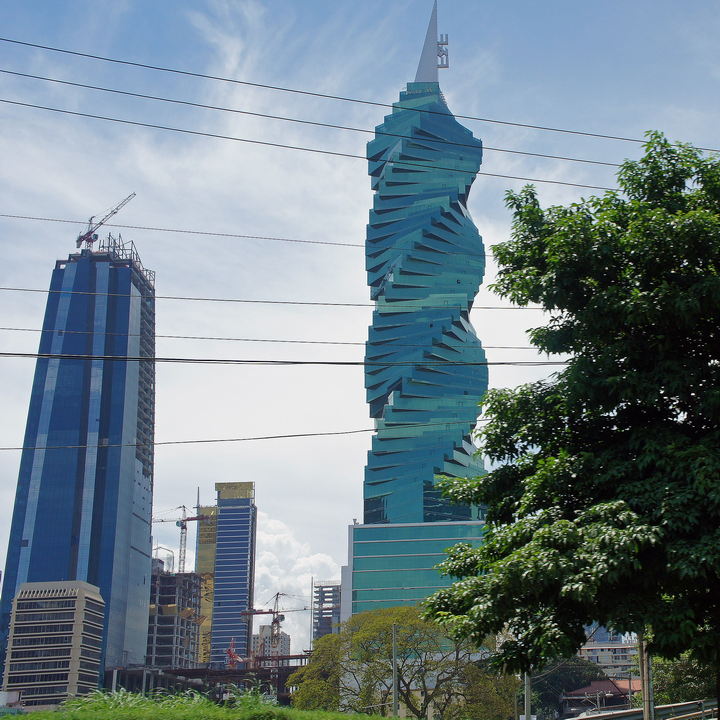
In the heart of Panama City’s bustling financial district stands the mesmerizing F&F Tower. With a design envisioned by the talented duo Julian Pinzón and Germán Samper of Pinzón Lozano & Asociados, this twisted tower has become a defining feature of Panama’s modern urban landscape.
Completed in 2011, the F&F Tower, often referred to as the “El Tornillo” (The Screw), spirals to a height of 242 meters across its 52 floors. The building’s cylindrical shape, accentuated by its glass-clad helical exterior, not only offers a visual treat but also an engineering solution to optimize shading and reduce cooling costs in Panama’s tropical climate.
Internally, the tower is a hub of commercial activity, housing prime office spaces that command views of Panama City’s ever-evolving skyline. The F&F Tower is not merely an architectural wonder but serves as a beacon of business and innovation in Central America.
02 – Absolute World Towers: Canada’s Dancing Duo
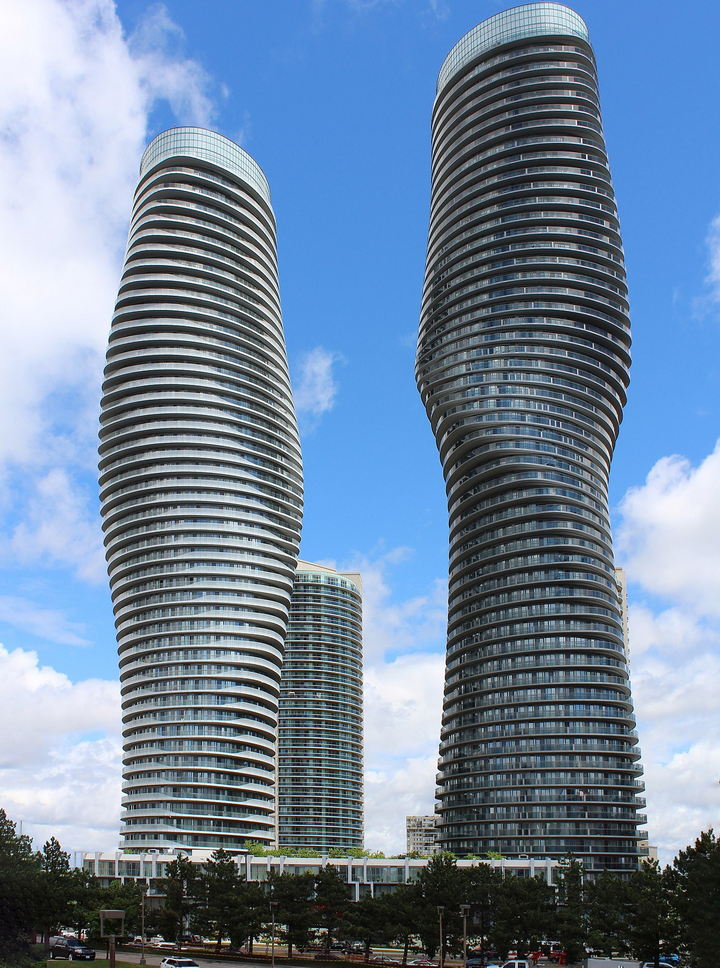
Mississauga, a vibrant city adjacent to Toronto, proudly presents the Absolute World Towers, affectionately dubbed the “Marilyn Monroe” towers for their sensuous, curvaceous profiles. These sculpted beauties are the brainchild of the acclaimed architectural firm MAD Architects, led by Ma Yansong.
Unveiled in 2012, the towers, with their bold, undulating design, challenge traditional skyscraper aesthetics. The taller of the two rises to 179.5 meters, twisting a staggering 209 degrees from base to top. This organic, fluid design was the result of a global architectural competition, and it has since turned the Absolute World Towers into modern icons of Canadian architecture.
Comprising primarily residential units, the towers offer residents sweeping vistas of Lake Ontario and the Toronto skyline. Their dynamic design ensures that no two floors are alike, giving each resident a unique perspective of the city. A testament to modern engineering and artistic vision, the Absolute World Towers are a dance of form and function, gracefully swaying to the rhythm of urban life.
01 – Mode Gakuen Spiral Towers: Japan’s Trio of Twists
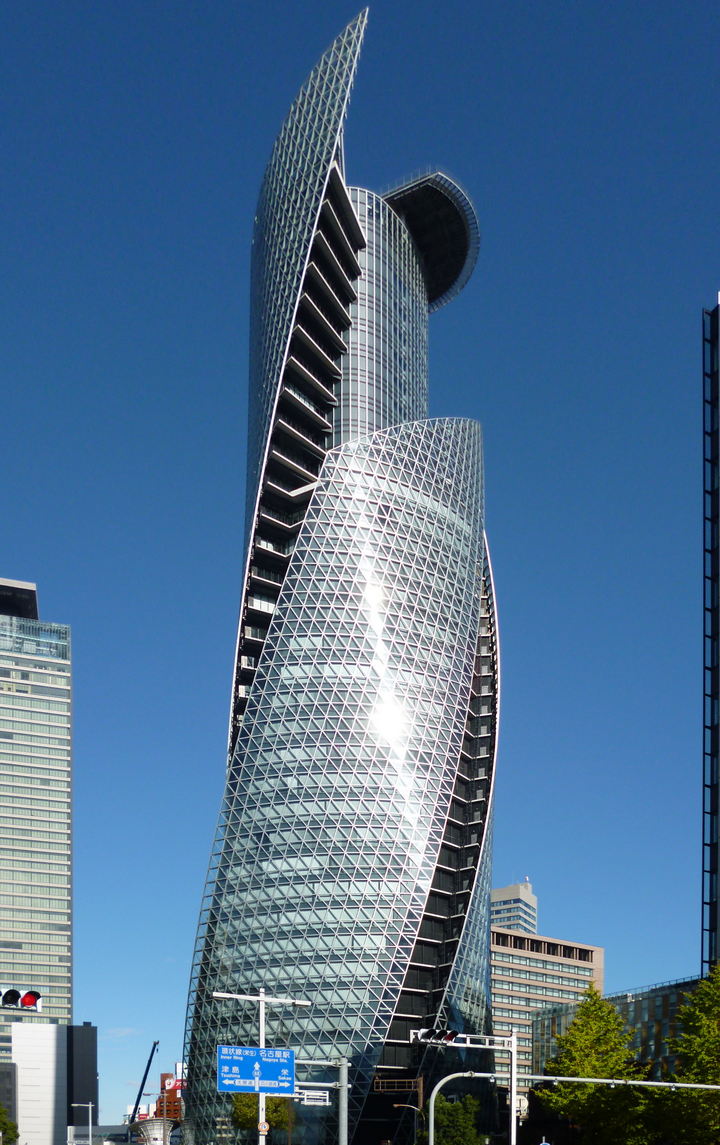
In the bustling heart of Nagoya, Japan, stands an architectural masterpiece: the Mode Gakuen Spiral Towers. This avant-garde structure, brought to life by the innovative minds at Nikken Sekkei, is a visual testament to Japan’s enduring commitment to architectural ingenuity.
Completed in 2008, this 170-meter tall edifice is composed of three individual towers that twist and coil around a central core. Each tower serves a distinct purpose, housing three educational institutions: a fashion school, a computer graphics school, and a medical support school. The spiraling design is more than just an aesthetic choice. It promotes natural ventilation, energy efficiency, and offers varied panoramic views for its students.
The tower’s ground floor boasts a stunning atrium space with a massive skylight, allowing natural light to flood into communal areas, fostering creativity and collaboration among students. The Mode Gakuen Spiral Towers stand not just as a symbol of architectural prowess, but also as a beacon of modern education, intertwining form, function, and future.
The Sturdiness of Geometry: Shapes in Architectural Marvels
In the realm of architectural design, certain shapes have stood the test of time, proving their worth in both form and function. One might wonder, “What is the most stable and rigid shape used for building structures?”
The triangle, with its three sides and angles, is often hailed as the most stable geometric shape. This is primarily because, when force is applied to a triangle, its sides and angles bear the load collectively, ensuring the structure’s integrity. The pyramids of Egypt, with their triangular faces, are a testament to this geometric marvel’s stability.
However, the architectural world isn’t limited to just triangles. Cylinders and spheres, with their ability to distribute stress uniformly across their surfaces, are also frequently used in design, especially when crafting domes or rounded edifices. Even in twisted towers, these foundational shapes play a pivotal role, ensuring the building remains secure and grounded, regardless of its avant-garde appearance.
Twisting towers and bizarre buildings have certainly brought a touch of the futuristic to our skylines. Still, beneath their mesmerizing exteriors lie foundational principles of geometry and physics that have been employed by famous architects for centuries.
Why Buildings Bend But Don’t Break: The Flexibility of Skyscrapers
Ever wondered why modern skyscrapers tend to sway on a windy day? It’s all down to the science of architectural flexibility. Contrary to popular belief, if a skyscraper were rigid and unyielding, it would be more susceptible to environmental forces. Therefore, to answer the question, “Why do skyscrapers need to be flexible?” one needs to understand the forces acting upon them.
From wind loads to seismic activities, skyscrapers face a barrage of external pressures. A bit of “give” in the structure ensures that these pressures don’t translate into cracks, breaks, or, in the worst case, a complete collapse. It’s akin to how a tree bends in a storm rather than snapping.
Furthermore, the inhabitants of these glamorous buildings would feel the effects of these pressures if not for the flexibility. Swaying, though it might sound alarming, is an intentional design feature that ensures the building’s longevity. It acts as a buffer, absorbing and redirecting external forces, safeguarding the integrity of the structure, and, most importantly, its occupants.


